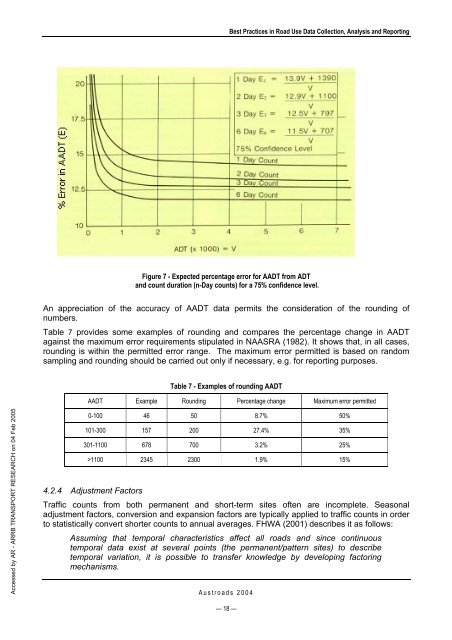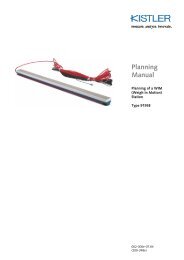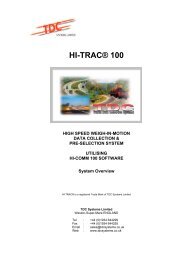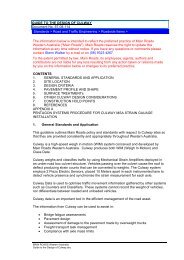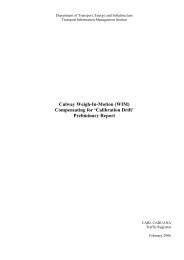AP-G84/04 Best practice in road use data collection, analysis ... - WIM
AP-G84/04 Best practice in road use data collection, analysis ... - WIM
AP-G84/04 Best practice in road use data collection, analysis ... - WIM
You also want an ePaper? Increase the reach of your titles
YUMPU automatically turns print PDFs into web optimized ePapers that Google loves.
Accessed by AR - ARRB TRANSPORT RESEARCH on <strong>04</strong> Feb 2005<br />
Aust<strong>road</strong>s 20<strong>04</strong><br />
— 18 —<br />
<strong>Best</strong> Practices <strong>in</strong> Road Use Data Collection, Analysis and Report<strong>in</strong>g<br />
Figure 7 - Expected percentage error for AADT from ADT<br />
and count duration (n-Day counts) for a 75% confidence level.<br />
An appreciation of the accuracy of AADT <strong>data</strong> permits the consideration of the round<strong>in</strong>g of<br />
numbers.<br />
Table 7 provides some examples of round<strong>in</strong>g and compares the percentage change <strong>in</strong> AADT<br />
aga<strong>in</strong>st the maximum error requirements stipulated <strong>in</strong> NAASRA (1982). It shows that, <strong>in</strong> all cases,<br />
round<strong>in</strong>g is with<strong>in</strong> the permitted error range. The maximum error permitted is based on random<br />
sampl<strong>in</strong>g and round<strong>in</strong>g should be carried out only if necessary, e.g. for report<strong>in</strong>g purposes.<br />
Table 7 - Examples of round<strong>in</strong>g AADT<br />
AADT Example Round<strong>in</strong>g Percentage change Maximum error permitted<br />
0-100 46 50 8.7% 50%<br />
101-300 157 200 27.4% 35%<br />
301-1100 678 700 3.2% 25%<br />
>1100 2345 2300 1.9% 15%<br />
4.2.4 Adjustment Factors<br />
Traffic counts from both permanent and short-term sites often are <strong>in</strong>complete. Seasonal<br />
adjustment factors, conversion and expansion factors are typically applied to traffic counts <strong>in</strong> order<br />
to statistically convert shorter counts to annual averages. FHWA (2001) describes it as follows:<br />
Assum<strong>in</strong>g that temporal characteristics affect all <strong>road</strong>s and s<strong>in</strong>ce cont<strong>in</strong>uous<br />
temporal <strong>data</strong> exist at several po<strong>in</strong>ts (the permanent/pattern sites) to describe<br />
temporal variation, it is possible to transfer knowledge by develop<strong>in</strong>g factor<strong>in</strong>g<br />
mechanisms.


